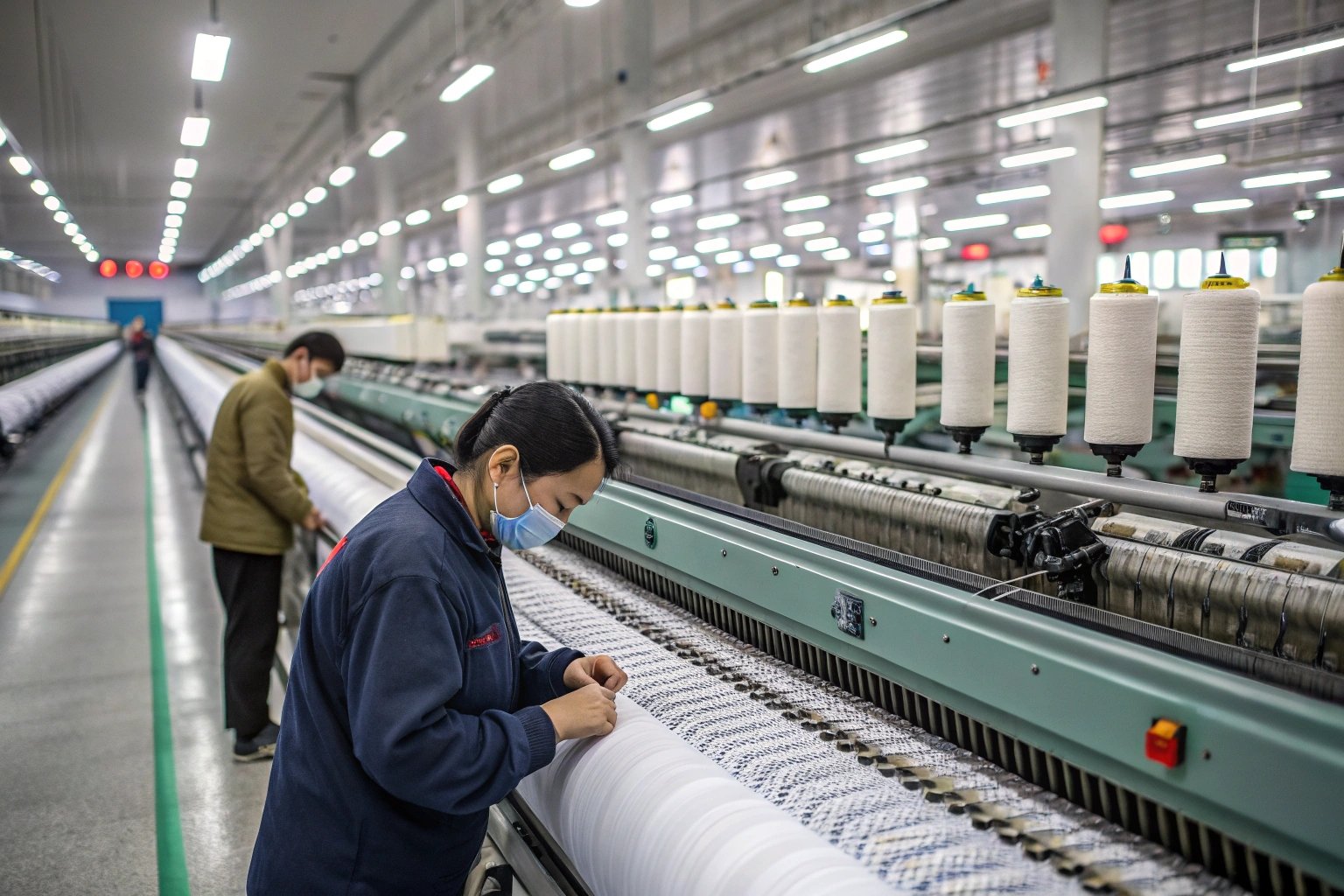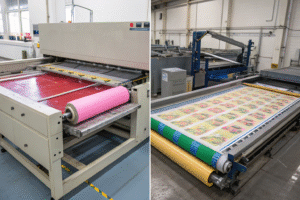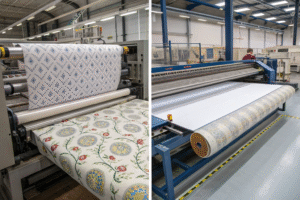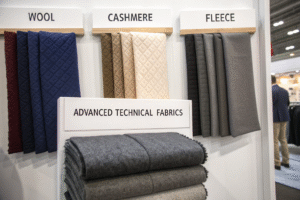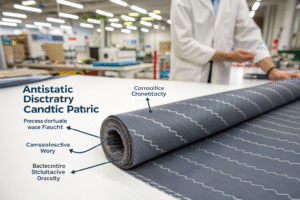In the world of textile manufacturing, precision is power. For knit fabrics, even a subtle deviation in yarn tension during production can disrupt the entire structure—resulting in defects like curling, misshaping, or inconsistent stretch. These issues aren’t just technical flaws; they can impact brand reputation, lead to rejected shipments, and increase production costs.
Consistent tension control is the backbone of quality in knit fabric manufacturing. It ensures uniform loops, fabric stability, and high yield, making it indispensable for both mass production and small-batch customization.
This article explores how tension control affects everything from yarn feeding to post-treatment dimensional stability. I’ll also share practical insight from our Fumao Fabric operations in Keqiao—where over two decades of experience, paired with modern QC systems, help us maintain exceptional knit fabric consistency for clients across 100+ countries.
What Causes Tension Variations in Knitting Machines?
Unstable tension is a silent disruptor in knitting production.
Even minor tension inconsistencies in a circular or flat knitting machine can cause serious structural anomalies in the fabric. These fluctuations might originate from machine wear, yarn bobbin irregularities, or friction changes in guides and feeders. For high-performance or fashion knits, this can lead to costly rework or wastage.
Most tension inconsistencies in knitting machines are caused by yarn feeding issues, mechanical wear, or environmental factors like humidity and temperature.
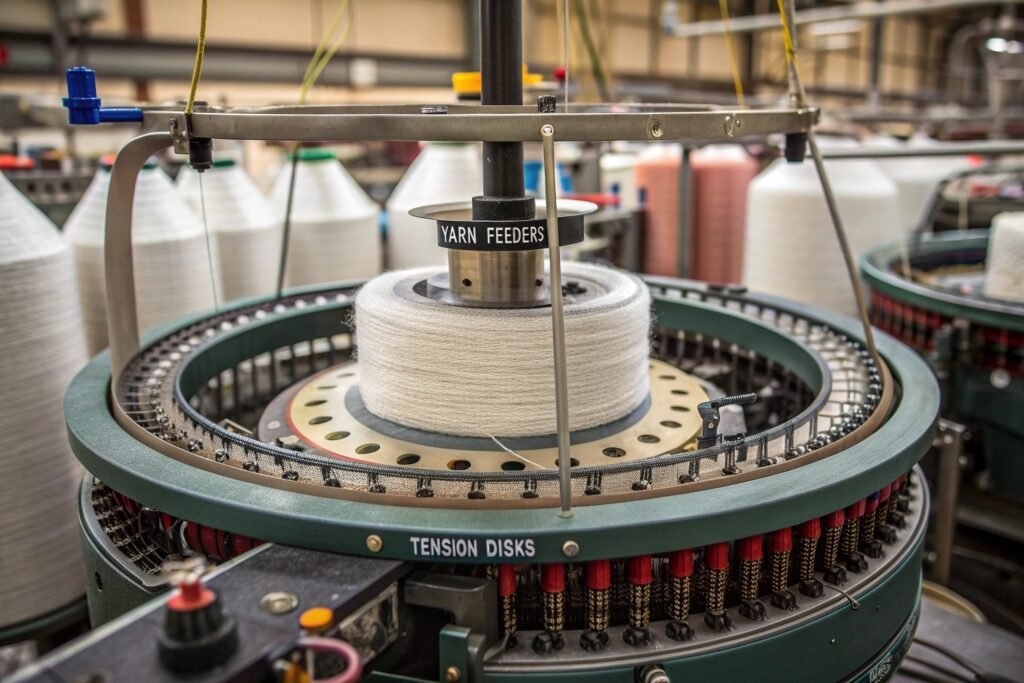
How Do Yarn Feeding Mechanisms Impact Tension?
Yarn feeders play a critical role in controlling tension. Improper synchronization between yarn delivery speed and knitting machine RPM can stretch or loosen loops. For example, if a yarn sensor fails to detect slack properly, it might lead to yarn being pulled under too much force—resulting in a tight fabric prone to distortion.
Advanced machines now come with servo-driven feeders or positive feed rollers that adjust feed tension in real time. These solutions can dramatically enhance uniformity and reduce human error.
Humidity also affects yarn elasticity. In our factory, we use dehumidifiers and humidity alarms to stabilize ambient moisture—especially when working with viscose or modal blends.
What Role Do Machine Components Play in Tension Shifts?
Mechanical parts like guide rails, take-down rollers, or creels often degrade over time. Worn pulleys or inconsistent take-down pressure can create intermittent pulling force, leading to fabric defects like barre or spirality.
We schedule monthly preventive maintenance checks across our knitting units. This includes lubricating moving parts, recalibrating sensors, and replacing tension springs. Smart sensors now allow predictive alerts before tension deviation affects output quality.
Using high-quality knitting needles and inspecting cam profiles ensures precise loop formation without damaging sensitive yarns like spandex or silk blends.
How Does Tension Control Affect Fabric Dimensional Stability?
Knit fabrics live and die by their dimensional behavior.
Poorly controlled tension during knitting leads to unpredictable shrinkage, curling edges, or puckering—especially when fabrics are dyed or finished. This compromises the fit, drape, and final appearance of garments, often resulting in costly returns or brand image damage.
Effective tension regulation preserves the structural integrity of loops, allowing fabrics to maintain shape, stretch, and softness even after multiple washes.
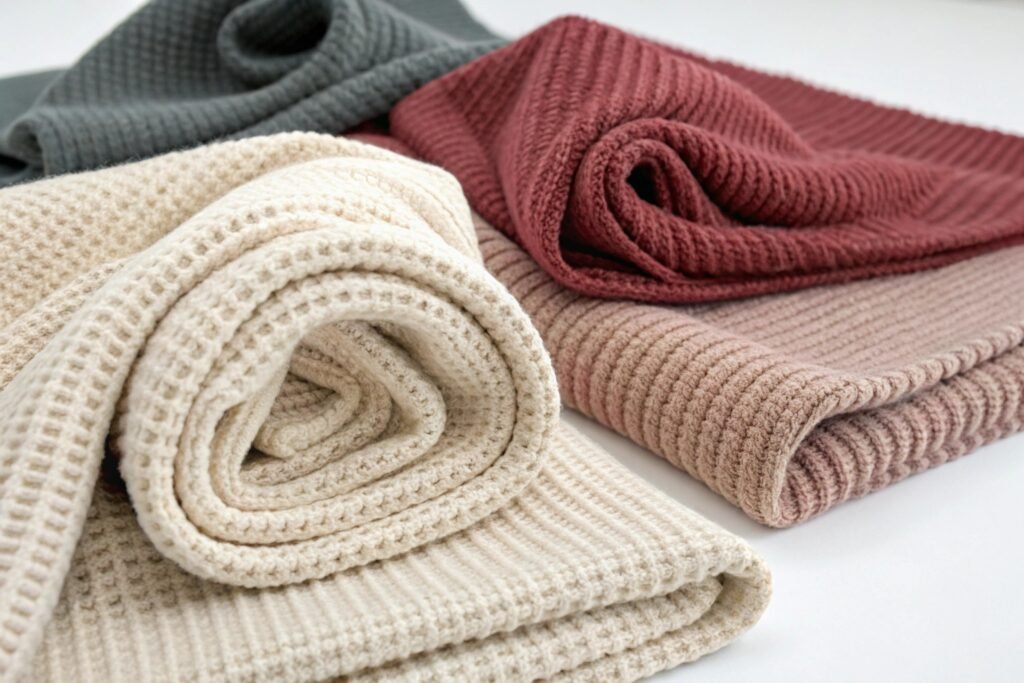
Can Tension Control Reduce Shrinkage and Skewing?
Yes, dramatically. When tension is uniform, the loops form symmetrically. This balance minimizes stress on fibers, preventing post-wash distortion. Without proper loop formation, fabrics may exhibit diagonal skew or longitudinal stretch.
We test each production run using AATCC shrinkage standards. At Fumao, fabrics go through pre-set relaxation and steam treatments post-knitting, which helps in stabilizing loop memory before dyeing.
Using lycra-blended yarns under incorrect tension often leads to bagging issues. That’s why real-time tension correction is essential, especially for leggings, sportswear, or shapewear.
What Happens to Fabric Softness and Hand Feel?
Tension affects yarn compression and surface uniformity. Over-tightening reduces the bulk of air trapped in the fabric, resulting in a stiff and lifeless texture. Conversely, loose tension can create uneven surfaces with inconsistent GSM.
We frequently use yarns like bamboo rayon or modal, where softness is paramount. Ensuring ideal tension during knitting and minimizing over-drying during finishing enhances the natural hand feel. This is monitored using KES-F hand evaluation systems in our CNAS lab.
Balancing softness and stretch recovery is especially critical in children’s and loungewear fabrics where comfort is king.
What Are the Best Practices for Real-Time Tension Monitoring?
In modern knit manufacturing, real-time data is king.
Tension sensors, digital feed regulators, and machine-learning algorithms now play a vital role in maintaining production quality. These innovations help textile manufacturers reduce defects, enhance efficiency, and achieve consistent results—batch after batch.
Best-in-class knit fabric producers use digital tension monitoring tools to ensure accuracy, reduce waste, and support sustainable production at scale.
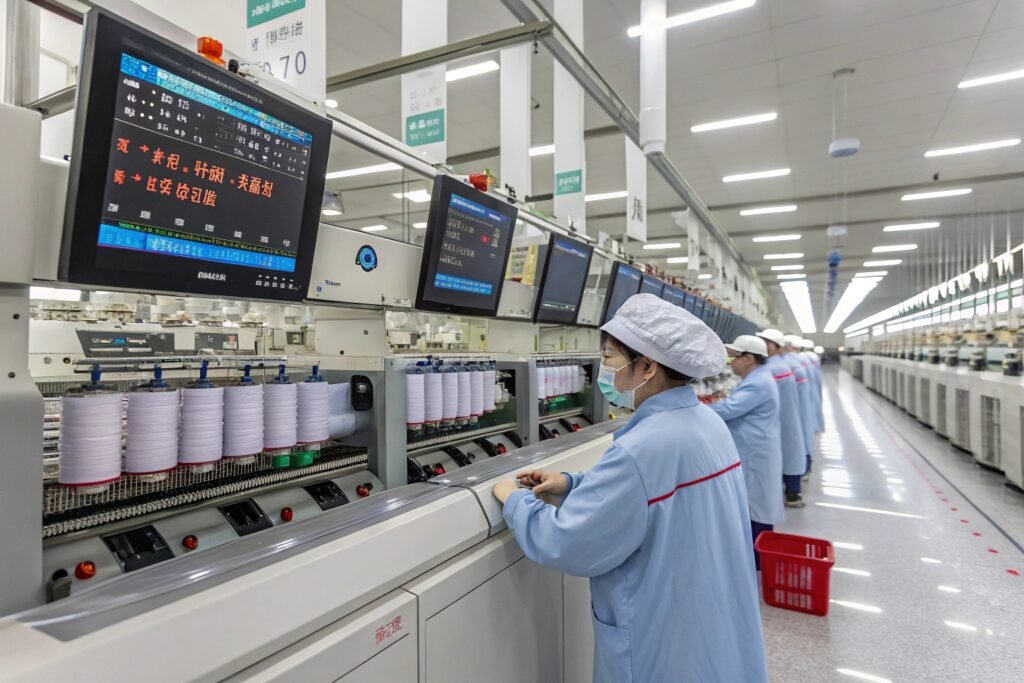
What Digital Tools Help Ensure Stable Yarn Flow?
Digital tension meters are mounted on most of our high-speed circular machines. These devices detect micro-variations in yarn delivery and send alerts to operators or automatically adjust feed rate. We use Loepfe YarnMaster ZENIT+ and Korean-made spindle sensors to monitor dynamic force.
Some advanced tools can also log data over time, helping us analyze recurring patterns linked to machine settings or operator behavior. This has helped reduce our defect rate by 38% year over year.
We also integrate ERP-linked dashboards to provide real-time visibility across production lines, which has greatly enhanced accountability and batch traceability.
How Often Should Tension Be Calibrated?
At Fumao, we calibrate tension settings at the start of each shift and after every yarn lot change. We use test swatches to check for loop distortion or GSM variation. For sensitive orders (e.g., shapewear), mid-batch checks are also implemented.
We’ve built SOPs based on ISO 13936-1, which outlines methods to determine fabric elongation under tension. Maintaining GSM consistency below ±3% is our target, verified in our CNAS testing lab using advanced fabric inspection tables.
Our QC team also provides digital photos of tension meter readings and loop structure to overseas clients, offering full transparency.
How Does Tension Control Enhance Production Efficiency?
When tension is right, the whole system flows.
Controlled tension not only enhances quality—it also improves machine uptime, reduces fabric breakage, and cuts waste. This makes production faster, leaner, and more cost-effective. For fashion retailers with tight lead times, this consistency is gold.
Well-calibrated tension reduces downtime, increases knitting speeds, and optimizes resource usage—all while meeting strict fabric quality standards.
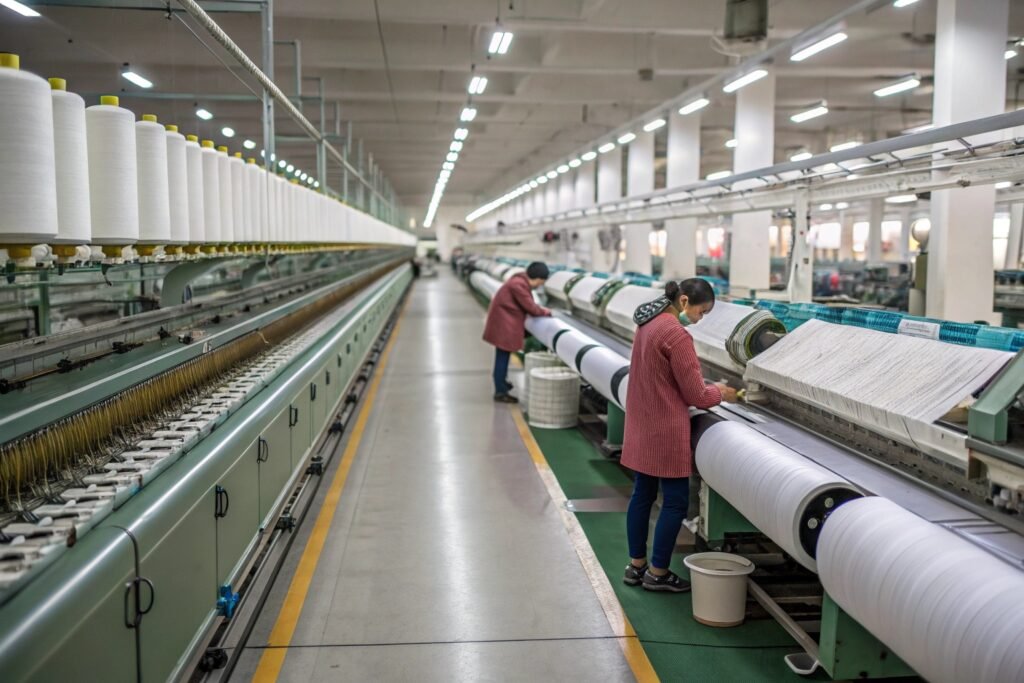
Can Optimized Tension Reduce Fabric Waste?
Absolutely. Improper tension leads to loop dropouts, holes, and GSM fluctuation—forcing reknits and generating scrap. By stabilizing feed force and stitch density, we’ve reduced waste per 10,000 yards from 5.6% to 1.8%.
With modern machine integration, rejected rolls are flagged immediately using optical inspection systems. We combine this with inline tension monitoring, preventing defective fabric from continuing through dyeing or coating.
Our defect traceability matrix allows us to isolate the exact cause—whether machine, operator, or yarn issue—reducing repeat errors.
How Does It Affect Production Lead Times?
Stable tension allows faster knitting without compromising quality. We’ve been able to cut our lead time for certain jersey styles from 10 days to just 6, thanks to predictive tension control and automated knitting shifts.
This capability is key when working with fast fashion clients like online retailers or promotional brands with short launch windows. It also helps us fulfill urgent sample orders within 48 hours, one of our core selling points.
Efficient tension practices also minimize machine stoppages and enable back-to-back shift operation—especially vital during peak order months from EU and North America.
Conclusion
Tension control isn’t a detail—it’s the foundation of success in knit fabric manufacturing. From yarn feeding to loop formation, from softness to shrinkage behavior, proper tension governs everything.
At Fumao Fabric, we blend hands-on experience with digital tools to maintain optimal tension in every batch we produce. This helps our partners avoid costly surprises, meet sustainability goals, and deliver quality products to market—fast.
Whether you're a brand buyer, factory sourcing director, or an apparel startup founder, tension consistency should be one of your top supplier selection criteria. It's not just about machines—it’s about control, transparency, and reliability from yarn to final roll.

